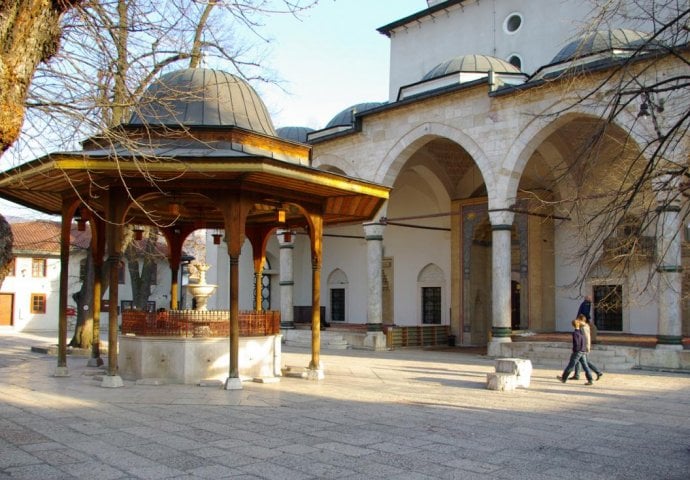Gazi Husrev-beg Mosque

The Gazi Husrev-beg Mosque (Gazi Husrev-begova Džamija or just Begova džamija) is a mosque in the city of Sarajevo, Bosnia and Herzegovina. Built in 16th century, it is considered the most important Islamic structure in the country and one of the world's finest examples of Ottoman architecture.
The Gazi Husrev-beg Mosque was built by the famous Ottoman architect Adzem Esir Ali, who also built the Yavuz Selim Mosque in Istanbul for the Sultan Selim I. It is located in the Baščaršija neighborhood in the Stari Grad municipality, and remains one of the most popular centers of worship in the city.
Gazi Husrev-Beg’s mosque was and has remained the most important Ottoman structure in Bosnia. The mosque including the fountain (šadrvan), Muslim primary school (mekteb), the room for ritual washing (abdestham), domed burial sites (turbeti) and Gazi Husrev-Beg’s and Murad-Beg Tardiæ’s harem, abode for the prayer caller (muvekithana) with minaret 45 m high and tower clock (Sahat-kula) dominate the market – place and forms its central and largest complex.
Gazi Husrev-beg Mosque was the first mosque in the world to receive electricity and electric ilumination in 1898 during the period of Austro-Hungarian Empire.
Between prayer times, the Gazi Husrev-beg Mosque is one of the favorite meeting places for Muslim youth. It is a place to study , to spend time with friends, to enjoy a coffee and the beautiful weather.
Also in the courtyard is the šadrvan, or Islamic fountain. It is used to cleanse yourself before entering the mosque and, as with all public fountains in Sarajevo, is spills over with sweet-tasting spring water.